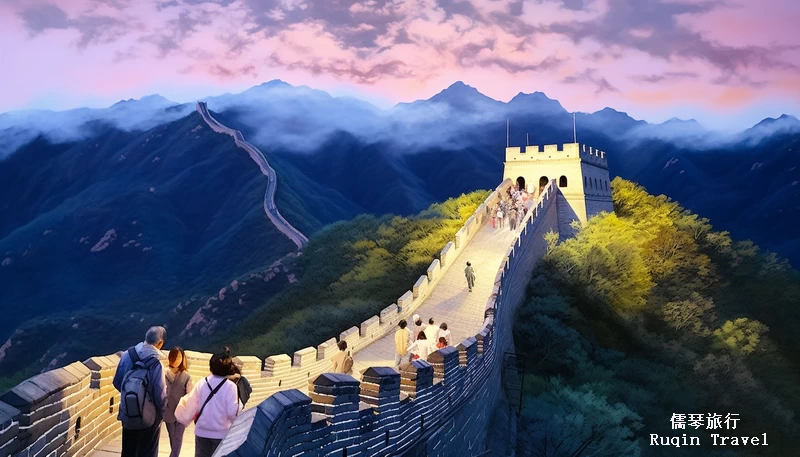20 Best Ideas To Explore China Rich Food History
20 Best Ideas To Explore China Rich Food History
Blog Article
Top 10 Tips For Shopping In China Local Particularties
1. Research Before You GoTip Learn about what each area is famous for. Suzhou, Jingdezhen and Tibet are all famous for their respective items.
Pro: This tool can help you to focus on your shopping goals and reduces the amount of time you waste.
Con: Needs the preparation of a team and familiarity with regional highlights.
2. Buy Locally to be Sure of Genuineness
TIP: Buy products directly from their place of origin to guarantee the authenticity and quality of the item.
Pro: Reduces the chance of copyright products and supports local artisans.
Cons: Visiting less touristy or rural regions is possible.
3. Check out the workshops and artists.
Tips: Look for small workshops or artisan hubs in lieu of generic shops.
Pro: Offers a greater understanding of the craft and ensures that you're purchasing directly from the creators.
Pro: Handmade products are more expensive and harder to purchase.
4. Take Cultural Meanings into Consideration
It is possible to learn about the historical context of these items such as jade carvings or calligraphy scrolls.
Pro: Adds value to your purchases and boosts the value of your purchases.
Con: Might take time to fully grasp the cultural subtleties.
5. Be sure to check the quality
You can determine the quality of products by looking at them such as tea, ceramics embroidery or tea.
Pro: It will keep you from disappointment as you'll get exactly what pay.
Cons: Some knowledge is required to identify quality products.
6. Beware of mass-produced products
Explore unique, handcrafted items as opposed to mass-produced reproductions.
Pro: Make sure you take home a treasured and unique souvenir.
Con The truth is that genuine craftsmanship can cost more and are difficult to locate.
7. Compare Prices
Tips: Comparing prices for the same product at multiple stores and stalls is an excellent idea.
Pro: Helps to identify acceptable price ranges, and helps to avoid being overcharged.
Con: Time-consuming in large markets, especially.
8. Buy Tea from reputable vendors
Tip: In regions like Hangzhou or Fujian Visit trusted tea shops for Longjing (Dragon Well) or Tieguanyin teas.
Pro: Assures superior quality and authenticity.
Con: High-quality tea can be expensive and can be hard to confirm for newcomers.
9. Local Customs: Understand them
In certain areas, you may find that sellers will expect you negotiate.
Pro: It adds a fun cultural aspect to shopping.
Incorrect understanding of the customs system can result in awkward interactions.
10. Pack Carefully
Think about how you plan to transport your fragile or bulky regional items such as silk and ceramics.
Pro: Protects the goods and ensures that they arrive in good order.
Con: Increases logistical challenges and potential costs for shipping.
Explore local specialties and reap the benefits
Unique souvenirs: regional specialty items are unique and cannot be that can be found anywhere else.
Cultural Immersion: Buying local products lets you experience the area's heritage and craftsmanship.
Direct purchases by artisans aid local economies.
Pros and Cons of Shopping Regional Specialties
Concerns about authenticity: the possibility of purchasing copyright products or versions of inferior quality.
The transportation of heavy and fragile objects can pose a challenge.
Genuine regional goods, particularly those made by hand, aren't cheap.
With these suggestions, you can shop confidently for the best local dishes, and ensure memorable and meaningful purchases from your visit to China. Take a look at the recommended plan your adventure to this iconic spot for website recommendations including eating in urumqi, top three buddhist temples in chengdu, lion forest garden suzhou classical garden, hohhot transportation, ancient football in china cuju in ancient china, blue dragon temple, shopping in harbin, shopping in tibet, xiang cuisine.html, basha miao village and more.
Top 10 Tips For Seasonal Visits To Famous Temples In China
1. Visit During the Off-Season (Autumn/Winter)Tip: Consider visiting popular temples in China during the off-season (autumn or winter) generally from November through February. The temperatures will be cooler and there will be fewer visitors.
Pro: A less crowded. It is a tranquil and serene environment.
Con: The weather may be colder, which may make outdoor temple tours less comfortable.
2. Be prepared for weather extremes
Tips: Temperatures differ greatly during different seasons. Winter can be very cold, whereas summers can be scorching. Be sure to check the forecast and plan your travel according to the forecast.
Pro Tip: Be prepared for all weather conditions and enjoy your trip in comfort.
Cons: It can be difficult to prepare to deal with extreme weather, especially when you're traveling in a small amount.
3. Visits during the spring and summer for lively Flora
Tip: Visiting temples in spring and summer allows you to view stunning gardens, flowering flowers and lush greenery around the temples.
The beautiful scenery adds to the enjoyment of visiting temple grounds.
Con The summer months can be scorching hot and busy at holidays, particularly the national ones.
4. Take into consideration festivals and special events.
TIP: Plan your trip during traditional celebrations like Chinese New Year (January/February) or the Mid-Autumn Festival (September). These special times allow you to take part in rituals, ceremonies and experience the vibrant culture of the temple.
Pro: The temples are often lively and full of traditional activities, giving visitors an experience unlike any other.
Con: During festival times temples may become very crowded and prices for accommodation could rise.
5. Avoid Peak Holiday Seasons
Tip: Avoid visiting temples during tourist peak season, such as Chinese New Year and Golden Week (October), as they are likely to be crowded by both local and foreign visitors.
Pro: More peaceful experiences without crowds, providing a more spiritual experience.
Con: You may not be able to attend some of the most exciting festivals when they are at their peak.
6. Check for Temple Closures During the winter months.
Tips: Some temples might have limited hours or closed during the colder winter months, especially in remote areas or northern regions. Always check ahead of time.
Benefits: It eliminates trips that aren't needed and lets you schedule other events in advance.
Con: A lot of temples are closed or reduced in hours for repairs. This could result in disappointment.
7. Early Morning Visits During the summer
Tip: If visiting in the summer months, make sure to get there early in the morning to avoid the scorching midday heat. Many temples are open early in the morning, when there are fewer visitors and less heat.
The cooler temperatures as well as the absence of crowds create a more relaxing vacation.
Con: Requires an early morning, which may not be suitable for all.
8. Be prepared for rain in the summer
It can be very rainy during summer, especially in the southern region of China. If visiting during this season, pack an umbrella or rain gear so you can stay dry.
Pros: Even in the rain, you can still take in the beautiful temple.
Cons: Rain can make outdoor activities unusable and temple grounds to be slippery.
9. Explore the Mountain Temples during the Autumn season.
Tip: Visit temples in mountainous regions, such as Mount Wutai (or Mount Emei) in the autumn. The weather is mild and the fall foliage makes an incredible scene.
Pros The cooler temperatures make outdoor activities and hiking more comfortable. The stunning views.
Con: Temples that are popular in the mountains can still draw crowds on weekends and holidays.
10. Make use of the Lunar Calendar to Plan Specific Events
Tip - Many temples in China use the lunar date calendar. Certain ceremonies and events are also tied to certain lunar dates. Study the calendar in order to attend important events, such as the Lantern Festival, Buddha's Birthday, or other temple ceremonies.
Pros Unique cultural experiences as well as a greater understanding of local religious practices.
Cons: It could take extra time to study and plan on the lunar calendar and some events might not be aligned with the dates of your travel.
The Benefits of Visiting Chinese Temples in the Season
Less crowds. Travelling off-season can be an unhurried, peaceful experience.
Festivals: Cultural celebrations provide an opportunity to learn more about the local traditions that are both cultural and religious.
Scenic beauty: Visits in spring or fall can be breathtaking with stunning scenery and vibrant gardens that surround temples.
The temperatures are more chilly in winter and autumn.
Pros and Cons of Seasonal Chinese Temple Visits
Unpredictable Climate: Winters may be cold and summers too hot.
Temple Closures: Some temples will close during extreme weather, or when they have restricted hours.
Crowded During Festivals Holidays and festivals are often accompanied by large crowds, making it difficult to enjoy the tranquil atmosphere of the temple.
Special Events: Certain seasonal events or ceremonies might not be held if you visit outside the proper time frame.
Plan your trip to the world-renowned Chinese temples at the right time of year can help you enjoy a meaningful and more enjoyable experience. Understanding the dynamics of the seasons is crucial to making the most out of every trip. Have a look at the top rated plan your trip to this site for site advice including wang zhaojun one of the four beauties in ancient china, jinan transportation, eating in changchun, xiamen, top three buddhist temples in chengdu, lijiang tour maps, shopping in dunhuang, the song of everlasting sorrow the famous long narrative poem, blue dragon temple, weaponry of iron age iron cannon iron armour and warships and more.